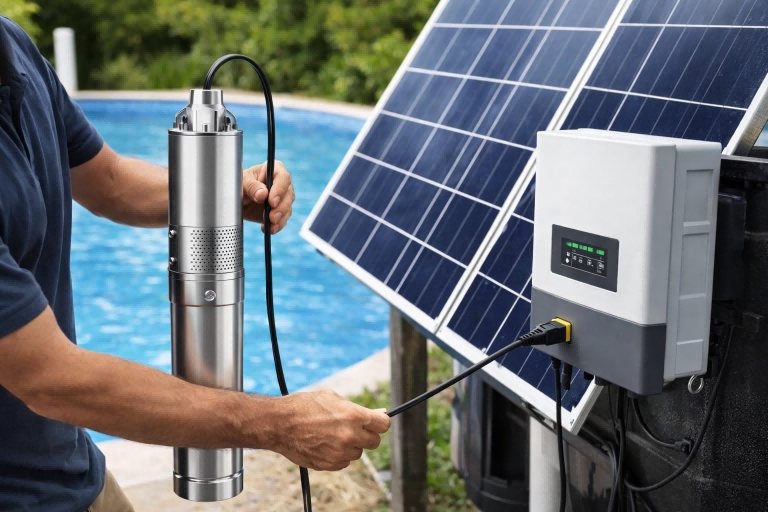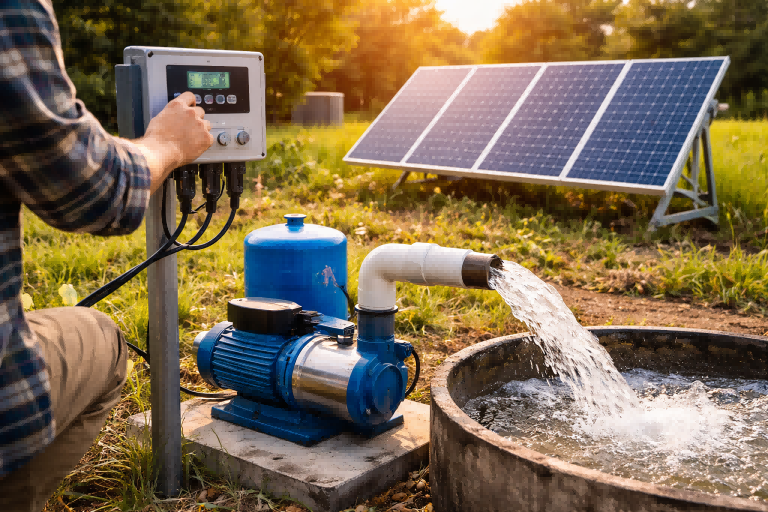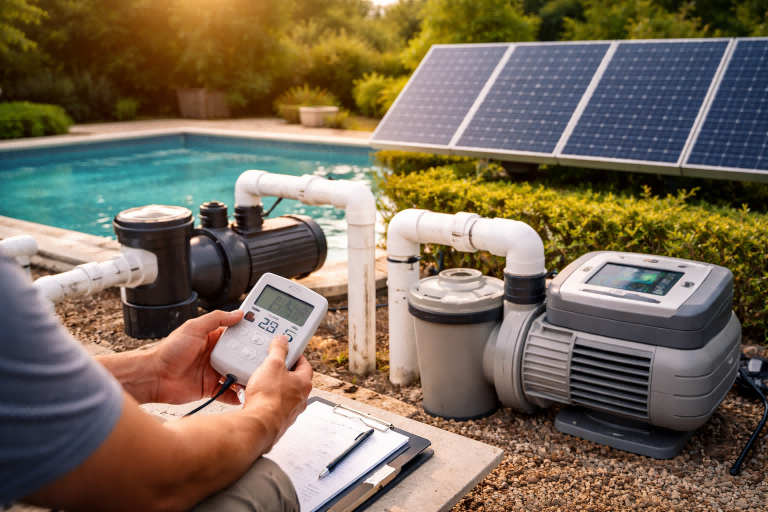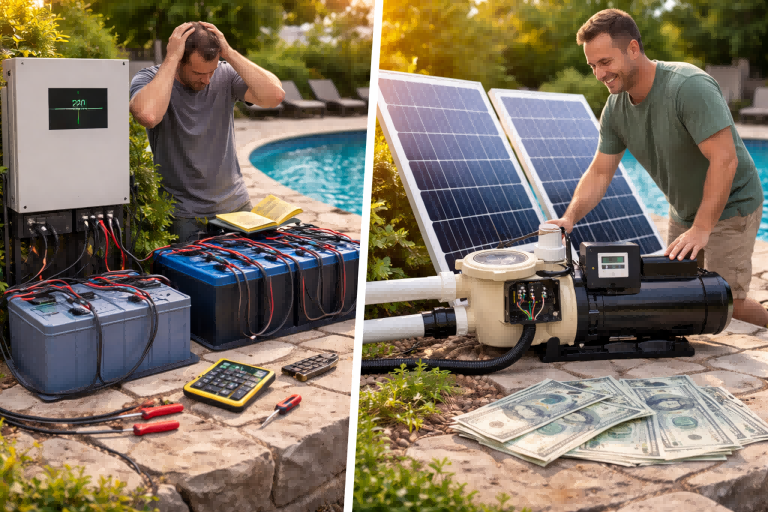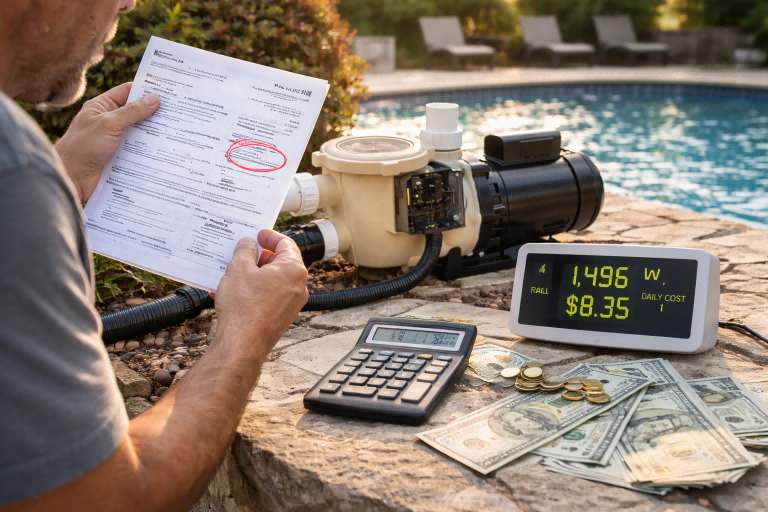Your pump house is overheating, risking costly equipment failure.
The continuous heat and moisture buildup can cause irreversible damage and shorten the lifespan of your valuable pumps.
Yes, a pump house must be vented.
Proper ventilation is critical for dissipating heat generated by the pump motor, controlling moisture to prevent corrosion, and removing potentially harmful fumes.
It ensures the pump operates efficiently and extends its service life, protecting your investment.
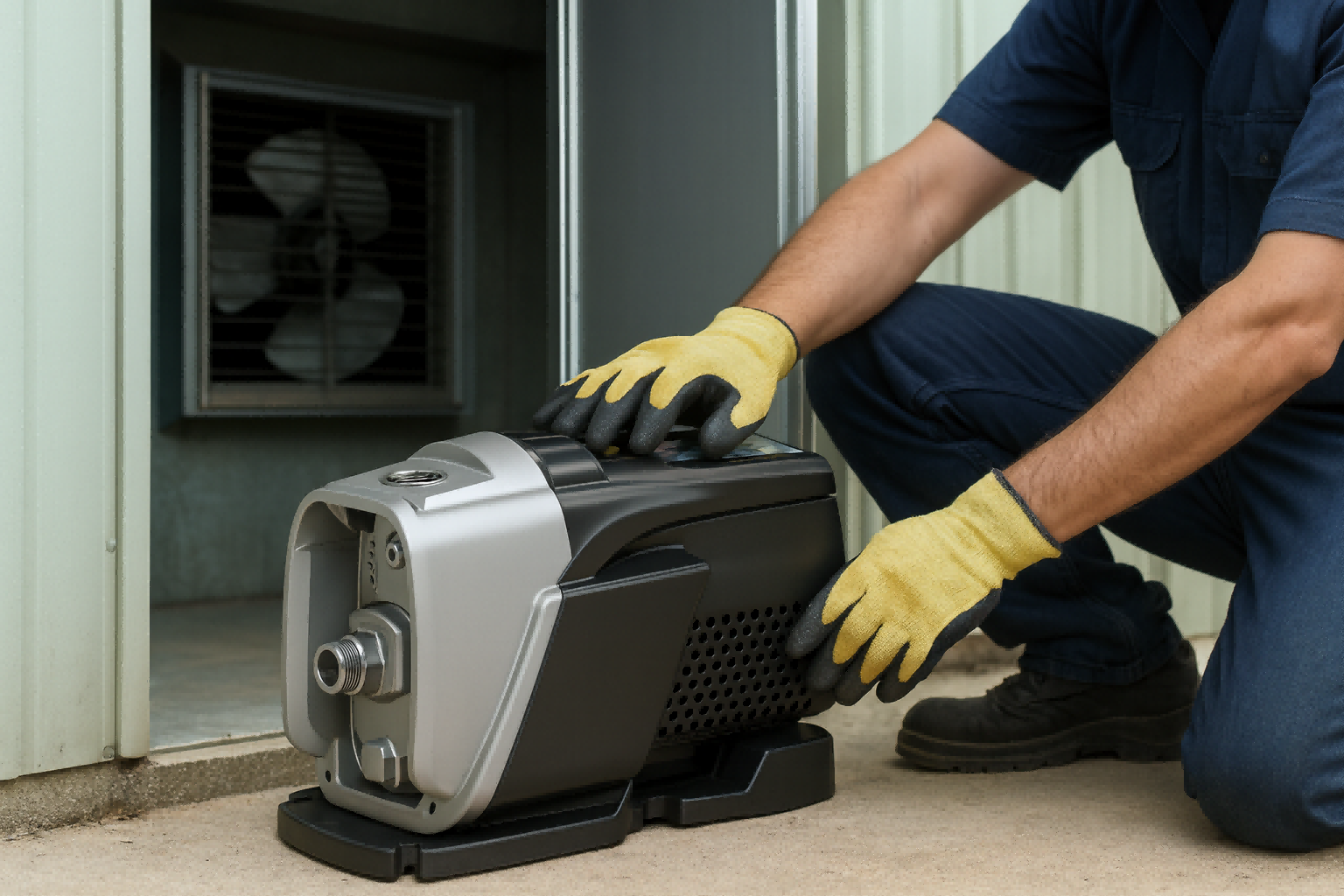
Ensuring your pump house is properly ventilated is not just a recommendation; it's a fundamental requirement for protecting your equipment and ensuring its longevity.
Many pump failures that are attributed to defects are actually caused by a poor operating environment, with inadequate ventilation being a primary culprit.
Understanding why ventilation is so crucial, what problems it prevents, and how to implement it correctly will empower you to provide better systems and advice to your own customers.
This knowledge is key to reducing warranty claims and building a reputation for reliable, long-lasting installations.
Why Is Proper Ventilation Essential for Your Pump House?
Stifling heat in your pump house is slowly cooking your pump's motor.
This constant thermal stress degrades internal components, leading to unexpected breakdowns and expensive, urgent repairs.
Proper ventilation is essential for heat dissipation, moisture control, and safety.
It actively removes the damaging heat produced by the pump, prevents rust and mold by managing humidity, and expels any hazardous fumes, ensuring the pump’s optimal performance and longevity.
Ventilation might seem like a minor detail, but it's a critical factor that directly impacts the health and efficiency of your water pump system.
A pump is a machine that converts electrical energy into mechanical energy, and this conversion process is never 100% efficient.
The lost energy is primarily released as heat.
Without a way for this heat to escape, the ambient temperature inside the pump house will rise dramatically.
This creates a hostile environment that can severely damage not only the pump but also its associated electronic controls.
For distributors and importers, understanding these principles is vital.
When you explain the importance of ventilation to your clients, you are not just selling a pump; you are providing a comprehensive solution that ensures reliability and customer satisfaction.
A well-ventilated system is a reliable system, and reliability is the cornerstone of a good business reputation.
Protecting Your Pump from Overheating
A pump motor generates significant heat during operation.
This is a normal byproduct of its function.
However, if this heat is trapped within a small, enclosed space, the temperature will steadily increase.
Modern pumps, especially high-efficiency models like Variable Speed Drive (VSD) pumps, have sophisticated electronics.
These components are particularly sensitive to high temperatures.
Overheating can cause the electronic controllers to malfunction or fail completely.
It also accelerates the degradation of motor windings, bearings, and seals.
Proper ventilation creates a constant flow of cooler, ambient air, which carries this excess heat away from the pump.
This helps maintain the internal temperature of the pump within its designed operating limits.
It ensures the pump runs efficiently and reaches its maximum expected lifespan.
Controlling Damaging Moisture and Condensation
Pump houses are often damp environments.
Changes in temperature between the inside and outside of the structure can cause condensation to form.
Water can also leak from pipes or fittings.
Without adequate airflow, this moisture gets trapped.
High humidity creates the perfect conditions for rust and corrosion on the pump's metal casing, motor, and electrical connections.
It can also lead to the growth of mold and mildew, which can damage the structure of the pump house itself.
Ventilation helps to dry out the air, reducing humidity levels.
It continuously replaces the moist, interior air with drier, exterior air.
This simple process is one of the most effective ways to prevent corrosion and protect the entire system from moisture-related damage.
A dry environment is a healthy environment for any mechanical and electrical equipment.
Ensuring a Safe Operating Environment
Some pump applications may involve chemicals or fuels.
For example, a pump house for an agricultural system might store fertilizers or pesticides nearby.
In other cases, a pump might be powered by a combustion engine.
In these situations, fumes can accumulate in an unventilated space.
These fumes can be flammable, toxic, or both.
Creating a buildup of these vapors poses a serious safety risk to anyone entering the pump house for maintenance.
A properly designed ventilation system ensures that any hazardous fumes are quickly and effectively exhausted from the building.
This maintains a safe air quality inside the space.
It protects personnel and reduces the risk of fire or explosion, which is a critical consideration for any enclosed industrial or agricultural structure.
Safety should always be the top priority.
What Are the Dangers of Inadequate Ventilation?
Your unventilated pump house is a ticking time bomb for your equipment.
The trapped heat and moisture are a destructive combination, leading to system failure when you least expect it, causing costly operational downtime.
The main dangers are premature equipment failure from overheating, severe corrosion from trapped moisture, and significant safety hazards.
Without ventilation, your pump will wear out faster, rust will destroy its components, and the risk of electrical faults or fume-related incidents increases dramatically.
Ignoring ventilation is one of the most common and costly mistakes in pump system installation.
The consequences go far beyond a simple repair.
They can lead to a cascade of problems that affect the entire water system and create significant financial and safety liabilities.
For a business owner like a distributor, understanding these risks is essential for advising clients correctly.
You can help them avoid these pitfalls, which reinforces your position as an expert and trusted partner.
The initial cost of installing proper ventilation is minuscule compared to the cost of replacing a high-performance pump and dealing with the subsequent water supply disruption.
Let's break down the specific dangers to see why this is not an area where corners should be cut.
Premature Equipment Failure
This is the most direct and predictable consequence of poor ventilation.
Every component in a pump has an optimal operating temperature range.
When heat builds up in an enclosed space, the pump is forced to operate in an environment that exceeds this range.
Here's how it causes failure:
- Motor Windings: The insulation on the copper windings inside the motor will break down and degrade under excessive heat. This leads to short circuits and complete motor burnout.
- Bearings: The lubricant inside the bearings thins out at high temperatures. This reduces its ability to protect the moving parts, causing increased friction, wear, and eventual seizure of the bearings.
- Electronics: VSD pumps and other smart pumps rely on sensitive electronic components like capacitors, transistors, and processors. Heat is the number one enemy of these parts, and prolonged exposure will lead to malfunction and failure of the control system.
- Seals and Gaskets: The rubber and polymer seals that prevent leaks will become hard and brittle when "baked" in a hot environment. This causes them to crack and fail, leading to water leaks.
Corrosion and Structural Damage
Moisture is the second major threat in an unventilated pump house.
When warm, moist air comes into contact with the cooler surfaces of the pump and pipes, condensation occurs.
This constant dampness creates an ideal environment for rust.
Corrosion can attack:
- The pump's cast iron or steel body.
- The motor housing.
- Fasteners like bolts and screws.
- Electrical terminals and junction boxes.
This corrosion doesn't just look bad; it weakens the components.
A rusted bolt can fail, and corroded electrical terminals can cause poor connections and electrical faults.
Furthermore, the persistent dampness can cause mold, mildew, and rot in the wooden structural elements of the pump house itself, leading to expensive structural repairs.
Critical Safety Hazards
An unventilated pump house can also be a dangerous place.
The risks are not limited to just the equipment.
- Electrical Risks: High humidity and condensation increase the risk of electrical short circuits. Water and electricity are a dangerous combination, and a poorly ventilated space elevates the chance of an electrical fault that could cause a fire or create an electrocution hazard.
- Fume Accumulation: If the pump is used for fuel, or if chemicals are stored nearby, the lack of airflow allows vapors to concentrate. These can be flammable, leading to a risk of explosion, or toxic, posing a health hazard to anyone entering the space. Even the off-gassing from PVC primers and glues used during installation can create a hazardous atmosphere if not properly vented.
| Risk Area | Consequence of Inadequate Ventilation | How Ventilation Mitigates the Risk |
|---|---|---|
| Pump Motor | Overheating, insulation breakdown, bearing failure. | Cools the motor, keeping it within its operating temperature range. |
| Electronics (VSD) | Component failure, system malfunction. | Prevents heat buildup around sensitive control boards. |
| Pump Body & Pipes | Severe rust and corrosion. | Reduces humidity and prevents condensation, keeping surfaces dry. |
| Building Structure | Mold, mildew, and wood rot. | Dries out the air and structural materials. |
| Personnel Safety | Risk of electric shock, exposure to toxic/flammable fumes. | Removes moisture and dangerous vapors, ensuring safe air quality. |
What Are the Main Types of Pump House Ventilation?
You know you need ventilation, but which type is right?
Choosing the wrong method can be ineffective, leaving your pump vulnerable to damage, or it can be overly expensive and complex for your needs.
The two main types are natural (passive) ventilation and mechanical (active) ventilation.
Natural ventilation uses vents and convection for basic airflow, while mechanical ventilation uses fans to guarantee a specific rate of air exchange, offering more powerful and reliable cooling.
Selecting the right type of ventilation depends on several key factors, including the size of your pump house, the heat output of your pump, your local climate, and your budget.
Both natural and mechanical systems can be effective when implemented correctly.
Understanding the pros and cons of each will help you recommend the best solution for a given application.
For distributors, this knowledge allows you to tailor your advice, ensuring your customer gets a system that is both effective and cost-efficient.
A simple gravity-fed system in a mild climate might only need natural ventilation, while a high-power industrial VSD booster pump in a hot climate will almost certainly require a mechanical solution.
Let's explore each type in more detail.
Natural Ventilation (Passive Systems)
Natural ventilation works by using the principles of convection and pressure differentials.
It requires no electricity to operate, making it a simple and cost-effective solution.
The basic setup involves installing at least two vents.
An intake vent is placed low on one wall, and an exhaust vent is placed high on the opposite wall or on the roof.
- How it Works: Hot air is less dense than cool air, so it naturally rises. The heat from the pump warms the air inside the pump house. This warm air rises and exits through the high exhaust vent. This creates a slight negative pressure inside the building, which pulls cooler, fresh air in through the low intake vent. This continuous cycle creates a gentle but constant airflow.
- Components:
- Louvers: These are angled slats that allow air to pass through but block rain and direct sunlight. They are the most common type of vent used.
- Ridge Vents: Installed at the peak of a roof, these are excellent for exhausting the hottest air that collects at the top of the structure.
- Turbine Vents: These spinning vents use the wind to help pull hot air out of the building, enhancing the natural convection effect.
- Pros: No operating cost, silent, low maintenance.
- Cons: Highly dependent on weather conditions (wind and outside temperature), may not be sufficient for large pumps or hot climates, offers less control.
Mechanical Ventilation (Active Systems)
Mechanical ventilation uses fans to actively force air in and out of the pump house.
This method provides a reliable and controllable rate of air exchange, regardless of the weather.
It is the preferred method for applications where heat loads are high or where reliable cooling is critical.
- How it Works: An exhaust fan is typically mounted high on a wall to pull hot air out of the building. Intake vents are placed on the opposite wall to allow fresh air to enter. The fan creates a powerful negative pressure, ensuring a consistent and high-volume airflow.
- Components:
- Exhaust Fans: These are sized based on the volume of the pump house and the required air changes per hour (ACH). They are the workhorse of a mechanical system.
- Thermostats: A fan can be wired to a thermostat. The fan will then automatically turn on when the temperature inside the pump house reaches a preset level (e.g., 95°F / 35°C) and turn off when it cools down. This saves energy and reduces wear on the fan.
- Intake Louvers: Even with a fan, you still need properly sized intake vents to allow replacement air to enter freely. If the intake is too small, the fan will struggle and be less effective.
- Pros: Highly effective and reliable, precise control over temperature, not dependent on weather.
- Cons: Requires electricity to operate, generates some noise, higher initial cost and maintenance (the fan motor).
| Feature | Natural Ventilation | Mechanical Ventilation |
|---|---|---|
| Operating Principle | Convection (hot air rises) & wind pressure. | Powered fans creating negative pressure. |
| Effectiveness | Moderate. Dependent on weather and vent placement. | High. Consistent and controllable airflow. |
| Operating Cost | None. | Low to moderate (cost of electricity for the fan). |
| Initial Cost | Low. (Cost of vents). | Moderate to high. (Cost of fan, thermostat, wiring). |
| Control | Limited. | Excellent. Can be automated with a thermostat. |
| Best For | Smaller pumps, mild climates, low heat load. | Large pumps (VSD), hot climates, critical applications. |
How Do You Calculate Ventilation Requirements?
You're ready to install a fan, but what size do you need?
Guessing can be a costly mistake.
An undersized fan won't cool the space effectively, while an oversized fan will waste energy and money.
Calculate the required airflow in Cubic Feet per Minute (CFM) using the room's volume and the necessary Air Changes per Hour (ACH).
The basic formula is (Length x Width x Height) x ACH / 60 = Required CFM. This ensures you select a fan that can adequately cool the space.
Properly sizing your ventilation system is a crucial step that bridges the gap between theory and practical application.
It ensures that the system you install will be effective.
For a B2B supplier, being able to guide your customers through this calculation adds immense value.
It demonstrates a deeper level of expertise and helps your clients design robust, reliable systems.
The goal is to ensure the air inside the pump house is completely replaced a certain number of times per hour.
This metric is called Air Changes per Hour (ACH).
While a precise engineering calculation would involve the pump's heat output in BTUs, a simplified ACH-based method is sufficient and effective for most pump house applications.
Understanding Air Changes Per Hour (ACH)
ACH is a measure of how many times the entire volume of air in a room is replaced in one hour.
Different applications require different ACH values.
For a pump house, the goal is to remove heat and moisture effectively.
- General Guideline: A good starting point for a typical pump house in a moderate climate is 10-15 ACH. This means the air should be fully replaced 10 to 15 times every hour.
- Hot Climates or High Heat Loads: For pump houses in very hot regions (e.g., deserts) or those containing multiple large pumps or high-power VSD units, you should aim for a higher rate, such as 20-30 ACH or even more.
The ACH value is the critical variable that you will select based on the specific conditions of the installation.
The Formula for Sizing Your Fan
Once you have determined the necessary ACH, you can calculate the required fan capacity.
Fan capacity is measured in Cubic Feet per Minute (CFM), which is the volume of air a fan can move in one minute.
The formula is straightforward:
1. Calculate the Volume of the Pump House:
- Volume (in cubic feet) = Length (ft) x Width (ft) x Height (ft)
2. Apply the ACH Value:
- Total Air to Move Per Hour = Volume x ACH
3. Convert to CFM:
- Required CFM = (Volume x ACH) / 60 minutes
This final CFM number is the minimum rating you should look for when selecting an exhaust fan. It's always a good idea to choose a fan with a slightly higher CFM rating than your calculated minimum to provide a margin of safety.
A Practical Example
Let's walk through an example to see how this works in practice.
Imagine a standard pump house with the following dimensions:
- Length: 8 feet
- Width: 6 feet
- Height: 8 feet
- Location: A moderately hot climate, so we'll choose an ACH of 20.
Step 1: Calculate the Volume
- Volume = 8 ft x 6 ft x 8 ft = 384 cubic feet
Step 2: Apply the ACH
- Total Air to Move Per Hour = 384 cubic feet x 20 ACH = 7,680 cubic feet/hour
Step 3: Convert to CFM
- Required CFM = 7,680 / 60 = 128 CFM
Conclusion of Calculation: For this pump house, you would need an exhaust fan with a rating of at least 128 CFM. You would likely choose a fan rated for 150 or 200 CFM to be safe.
Important Note on Intake Vents: You must also have adequate intake vents. The total open area of your intake vents should be larger than the exhaust opening of the fan. A common rule of thumb is to have 1.5 square feet of intake area for every 1,000 CFM of fan capacity. Without enough intake air, the fan will not be able to perform at its rated CFM.
Conclusion
A vented pump house is non-negotiable for equipment health.
It protects your investment by controlling heat and moisture, ensuring your pump system operates reliably and has a long, productive life.
FAQs
How do I vent a pump house?
Install at least two vents: a low intake vent for cool air and a high exhaust vent for hot air. For more power, install a thermostatically controlled exhaust fan.
Does a well pump house need to be heated?
In cold climates, yes. A small, thermostatically controlled heater is needed to prevent the pump and pipes from freezing, which can cause catastrophic damage.
How big should a pump house be?
It should be large enough to house the pump and tank with at least 2-3 feet of clearance on all sides for maintenance access and airflow.
Does a pump have to be in a pump house?
Not always, but it is highly recommended. A pump house protects the equipment from weather, theft, and vandalism, significantly extending its lifespan.
How hot is too hot for a well pump?
Most pump motors and electronics should not operate in ambient temperatures above 104°F (40°C). Consistent temperatures above this drastically shorten a pump's life.
Can a well pump be in a garage?
Yes, a garage can be a suitable location as long as it provides protection from freezing and has enough space. Ensure it's not in a sealed, unventilated closet within the garage.
Should I insulate my pump house?
Yes, insulation is crucial in both hot and cold climates. It helps keep the pump house cooler in the summer and prevents freezing in the winter, stabilizing the internal temperature.


